Project managers are already responsible for juggling a bunch of moving parts. So, if creating and monitoring your budget is a complicated process, it takes time away from more high-value work.
In this article, we’ll break down the basics and guide you through tips for developing and sticking to realistic project budgets.
What is a project budget?
A project budget is a detailed financial plan that outlines the estimated costs required to complete a project successfully. It includes a breakdown of expenses for various resources such as labor, materials, equipment, and any other relevant costs.
The more detailed and accurate your project budget, the easier it will be to plan and execute your project while maintaining your profit margins and keeping clients happy.
Why?
Because having a precise project budget helps you:
- Scope and quote projects more accurately by breaking down and estimating the costs of each deliverable or phase
- Keep projects profitable by tracking actual costs against your planned budget in real-time throughout the project
- Proactively address overspending and adjust resources, project scopes, or client fees accordingly
- Better allocate work among team members based on the scope and labor costs
Project budgets typically include both internal costs and external costs.
Internal costs
- Labor costs (salaries, wages, employee benefits)
External (pass-through) costs
- Bills
- Expenses
For example, let’s consider a fixed fee project budget for a client’s website:
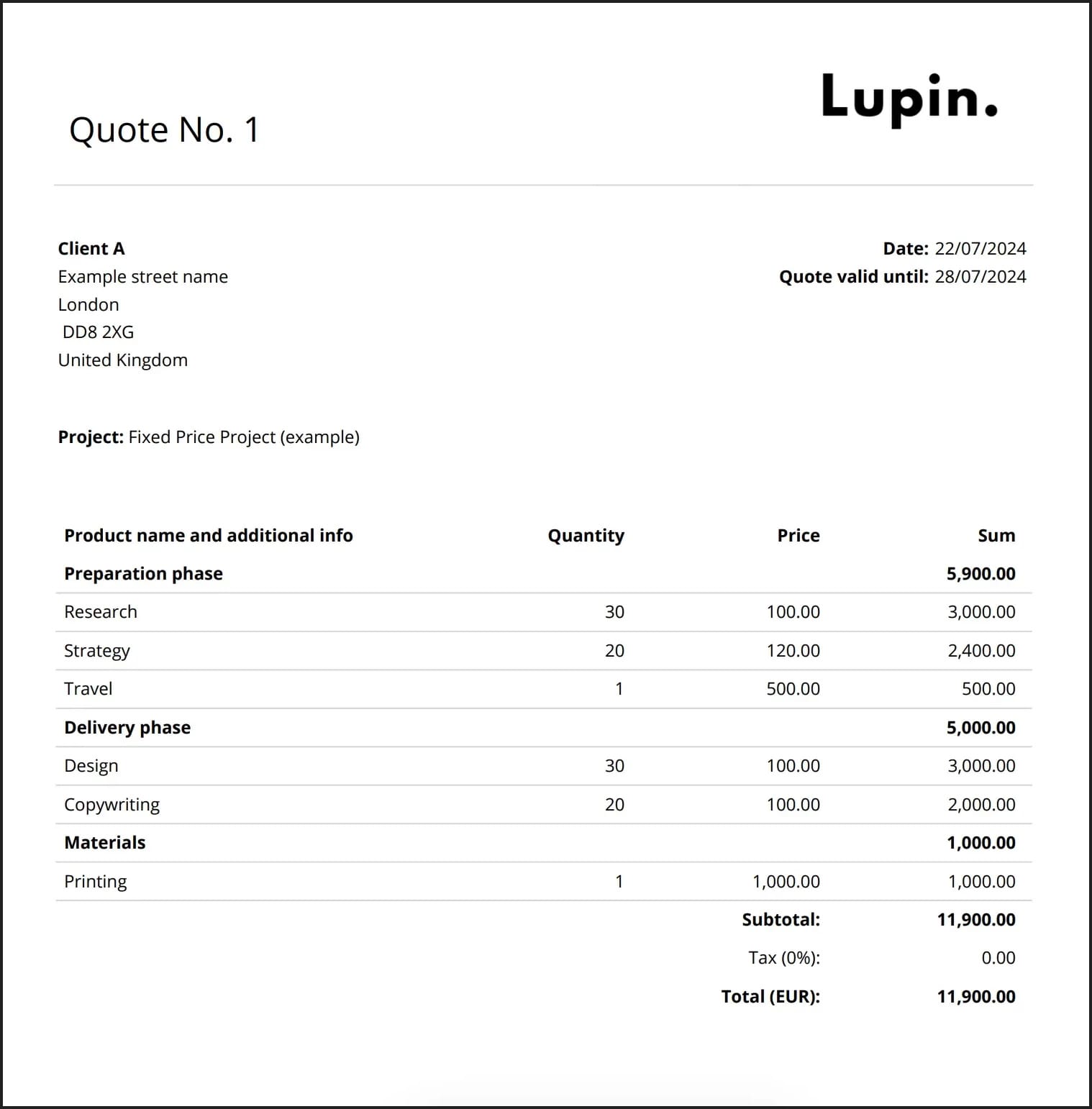
The total budget of €11,900 includes:
- Internal costs for the agency’s labor and travel for the preparation and delivery phases
- External costs for printing materials
Without a solid budget like this, you’re left relying on guesswork to plan out project spending and costs appropriately. This can quickly lead to overspending and scrambling to adjust factors like resources, scope, or timeline to bring costs back under control.
Project estimate vs. project budget
While they’re connected, a project budget isn’t the same as a project estimate:
| Project estimate | Project budget | |
|---|---|---|
| What is it? | A rough calculation of all the costs, resources, and time needed to complete the project | A detailed plan of how the money allocated for the project will be spent |
| When is it created? | Before the Statement of Work (SOW) estimate is made | After the SOW estimate is approved |
| How is it used? | It helps you and the client determine if the project is feasible | It helps you track and control spending and gives the client an understanding of where their money is going |
Let’s say a client wants your agency to design a website. First, you’d create a project estimate based on similar projects you’ve done before. This ballpark figure is like a first draft of your budget – it’ll get more detailed later, but getting it right up front is super important.
Think of it this way: you wouldn’t know how long it takes to bake a cake or how much the ingredients cost. You’d use a recipe. Project estimates are like that recipe. You look at past projects to see how long they took and how much they cost, then use that info to create a solid estimate for your new project.
So, instead of just throwing out a random number, use accurate data to get as close as possible to the actual cost and timeline. This way, when you present your estimate to the client, you’ll be confident in your numbers and can adjust them if needed to fit their budget.
How to create a project budget in eight steps
A solid project budget is like a roadmap for your project’s financial success.
Here’s a simplified guide to creating one, focusing on crafting an initial cost estimate for your client:
| Step | Summary |
|---|---|
| Define the project scope. | Outline the deliverables, time, and resources needed for the project. |
| Break down the project scope into deliverables or phases | Split the project into phases and tasks that make monitoring project progress and spending easy. |
| Estimate the duration of each deliverable or phase | Establish how many hours it’ll take to complete the work in each phase. This gives you a foundation for calculating your labor costs. |
| Calculate the internal costs. | Based on estimated hours, calculate how much each deliverable, task, or phase will cost |
| Add up external costs | Estimate what external costs (i.e., bills and expenses) you’ll encounter during the project, and add these costs in. |
| Calculate the total project cost | Add up your internal and external costs. |
| Check the delivery margins. | Calculate your project’s delivery margin based on total internal and external costs. If you’re not getting the margin you need, review your costs and adjust accordingly. |
| Get approval on your final budget | Send the budget to your internal team and the client for sign-off. Before proceeding, make sure everyone is on board with it. |
Check out our project costing guide for a more in-depth explanation of each step.
Best practices for managing project budgets
Once you’ve finalized your project budget, you need a plan to stick to it.
This helps you control the pace of your spending. If project variables like team member availability or scope change, your finances won’t get completely messed up.
Here are four tips to make tracking internal and external costs easier:
1. Track your labor costs in real-time
If you’re not tracking where your team’s time is spent—or worse, you’re tracking it somewhere, but it’s not connected to anywhere else—you’ll struggle to manage your budget effectively.
Why?
Because without a real-time understanding of your team’s time, you can’t accurately measure (and predict) labor costs.
During a project’s lifecycle, so many unexpected resource changes can pop up:
- Employees get sick and take leave
- Someone takes longer on a task than you expected
- A different employee ends up working on a task
You won’t know your true labor costs if you’re not monitoring tracked time and labor data in real time. Even one week of unexpected changes can throw off your planned costs, leaving you scrambling to re-adjust.
Scoro is a project budgeting tool that lets you stay on top of your team’s time and labor costs. So you can capture all billable and non-billable hours in one spot. And identify and address any cost deviations from your original budget.
Start by setting labor rates for each team member and role. Go to “Settings” > “Work and projects” > “Labor Cost.”
Click any team member’s name to set their labor rate. You can also set labor rates for specific roles. So you can still make accurate estimates and budgets—even if you don’t know which team member will deliver the work.
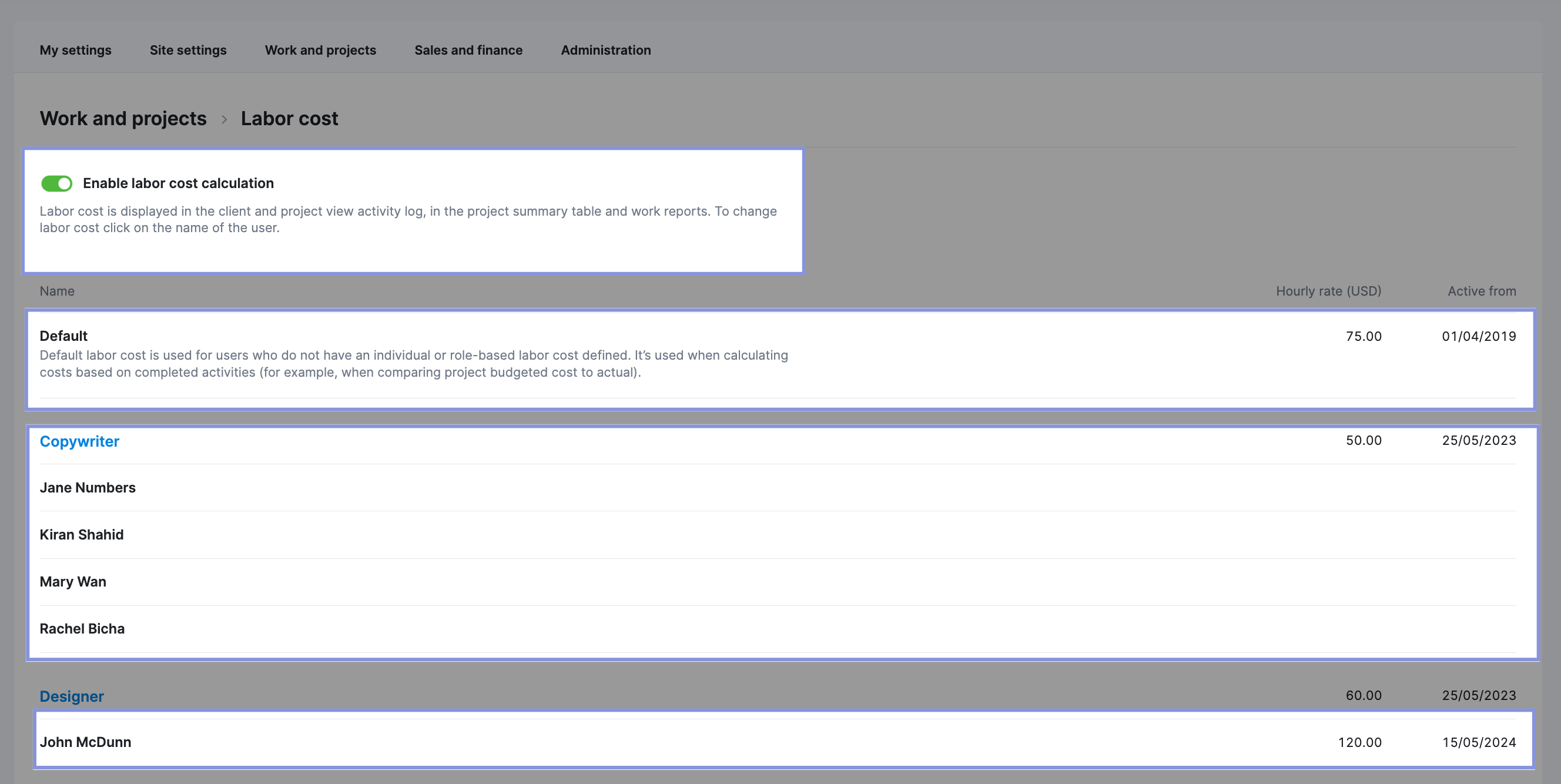
Team members can track time using Scoro’s timesheet, real-time timer, or automatic calendar log. These logged hours are then multiplied by individual labor rates to calculate labor costs, ensuring accurate tracking within the project budget.
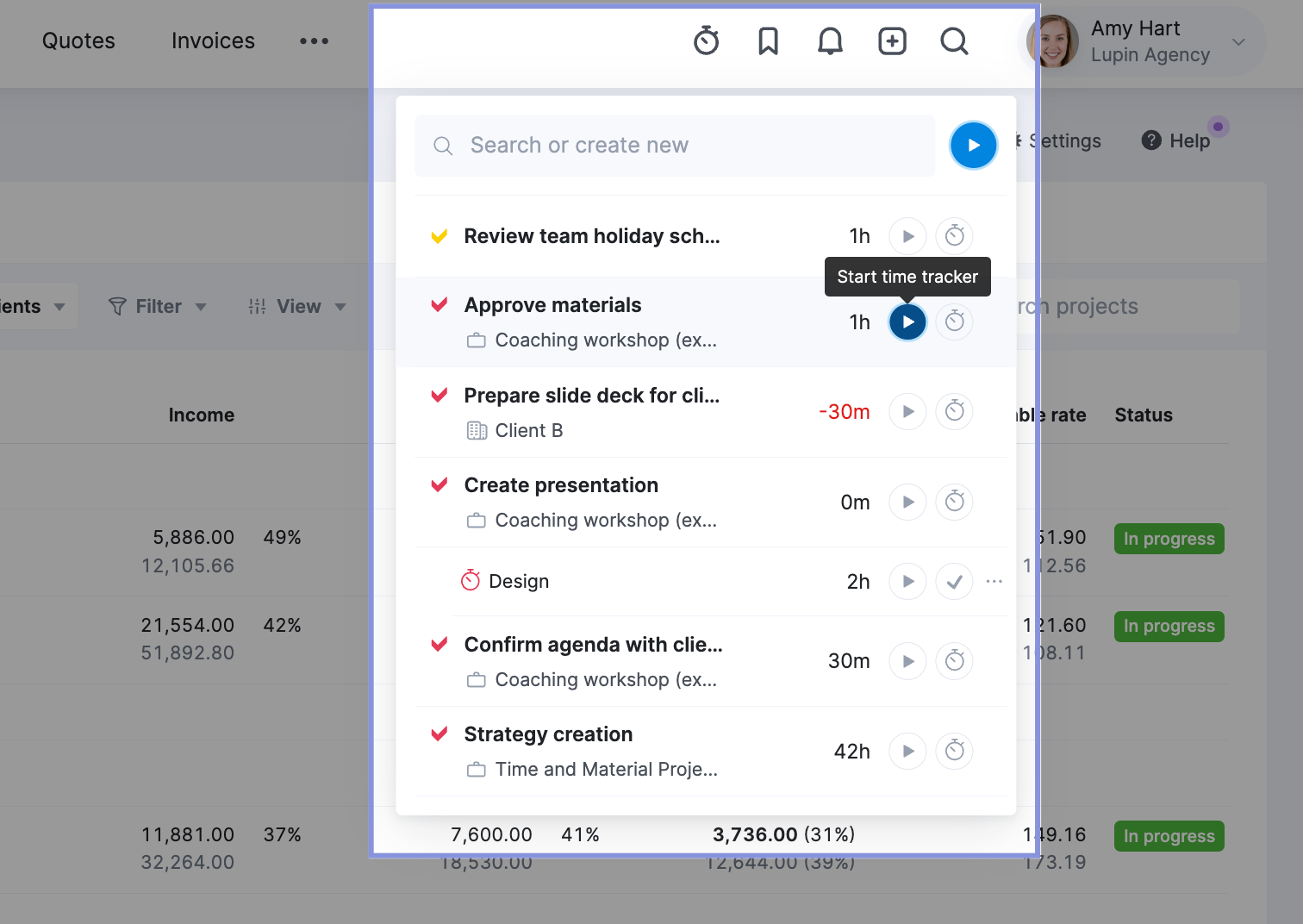
The breakdown of labor costs for different projects can be viewed by navigating to “Projects” > “Project list” and ensuring “Labor cost” is selected within the “Data columns” dropdown under “View.“
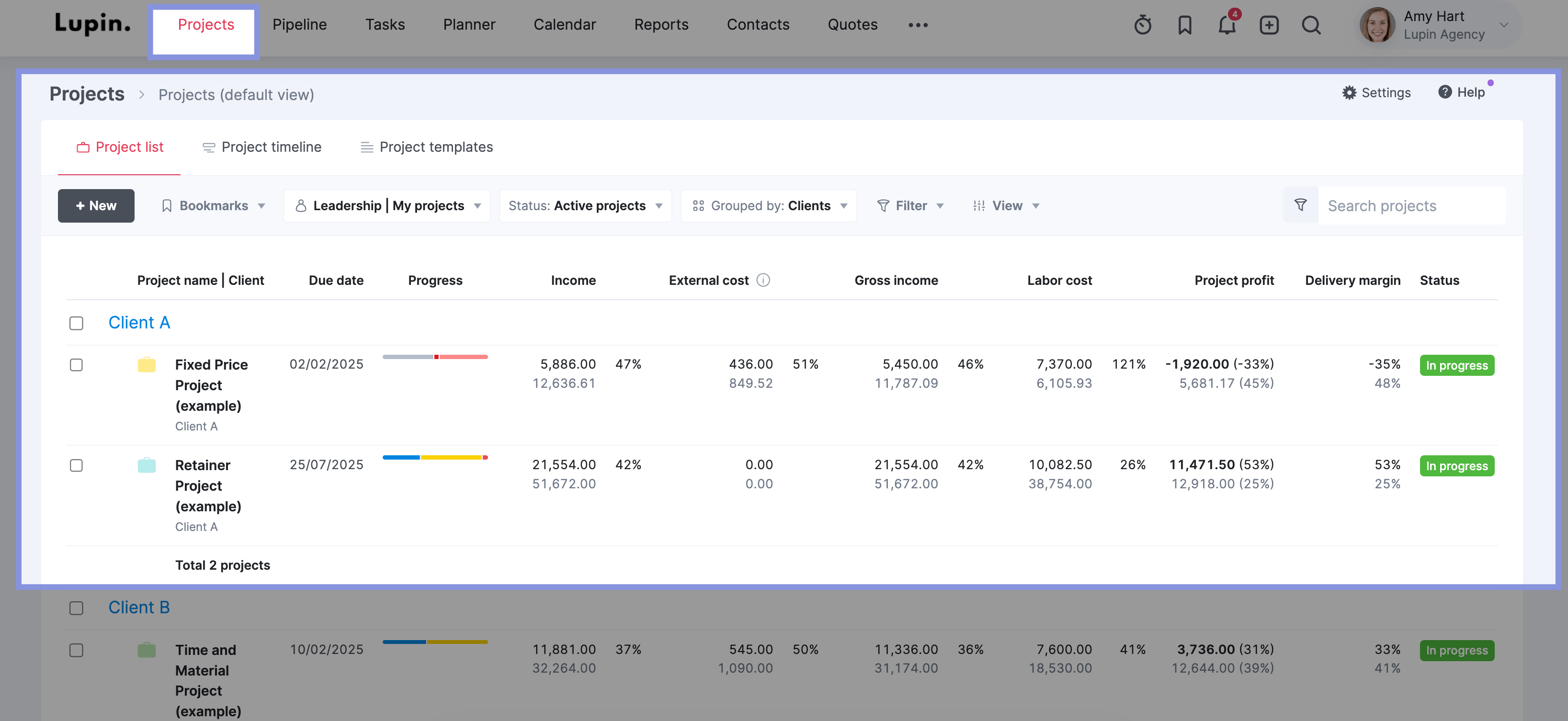
To analyze labor cost breakdowns across phases or deliverables within a specific project, navigate to “Budget” > “Quoted vs. Actual” after selecting the desired project.
Now, you can see the quoted and actual labor costs for each deliverable or task within the project.
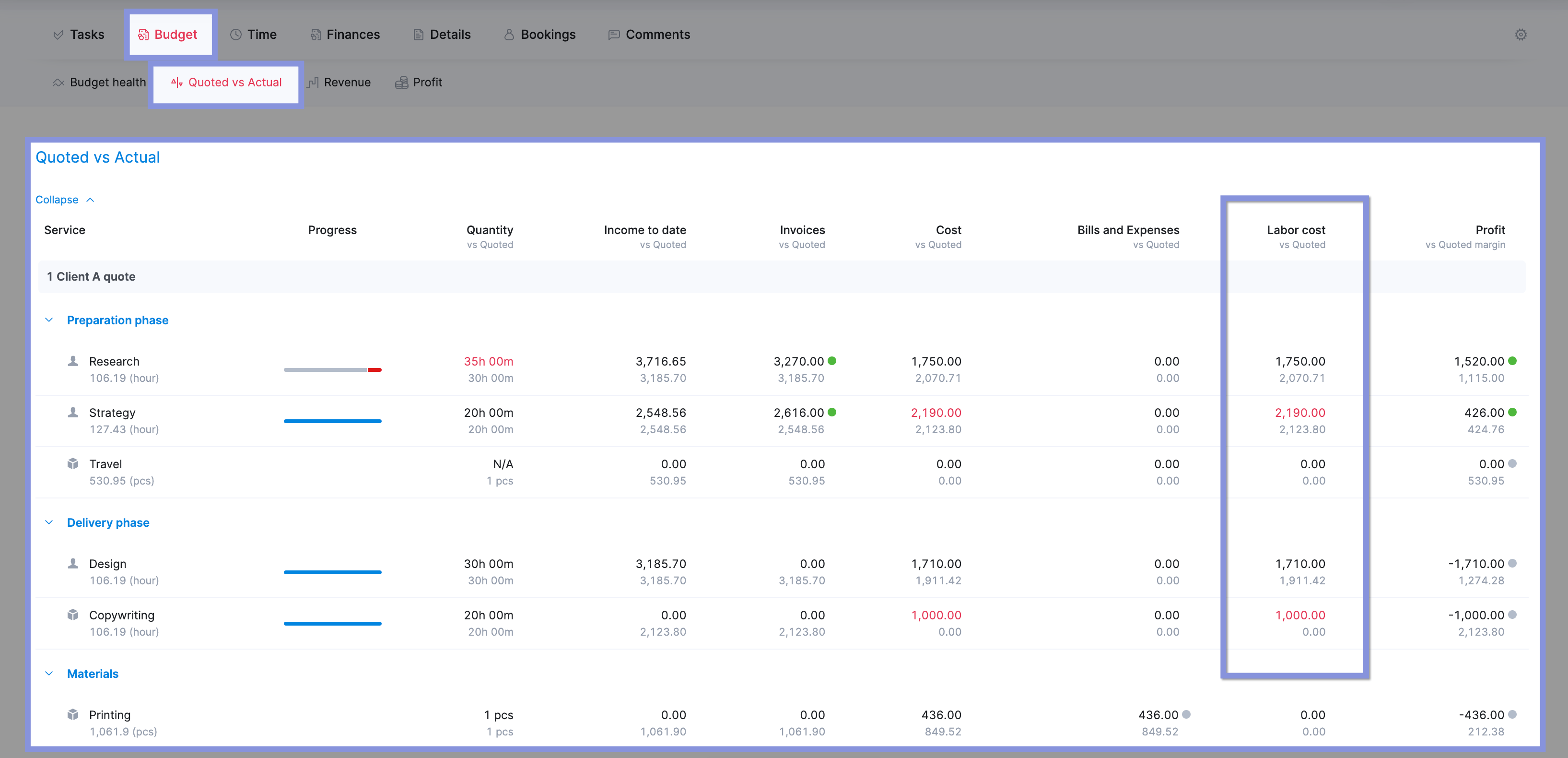
The project’s budget health, including labor and external costs, can be easily monitored through a burn-up chart displayed on the “Budget health” tab.
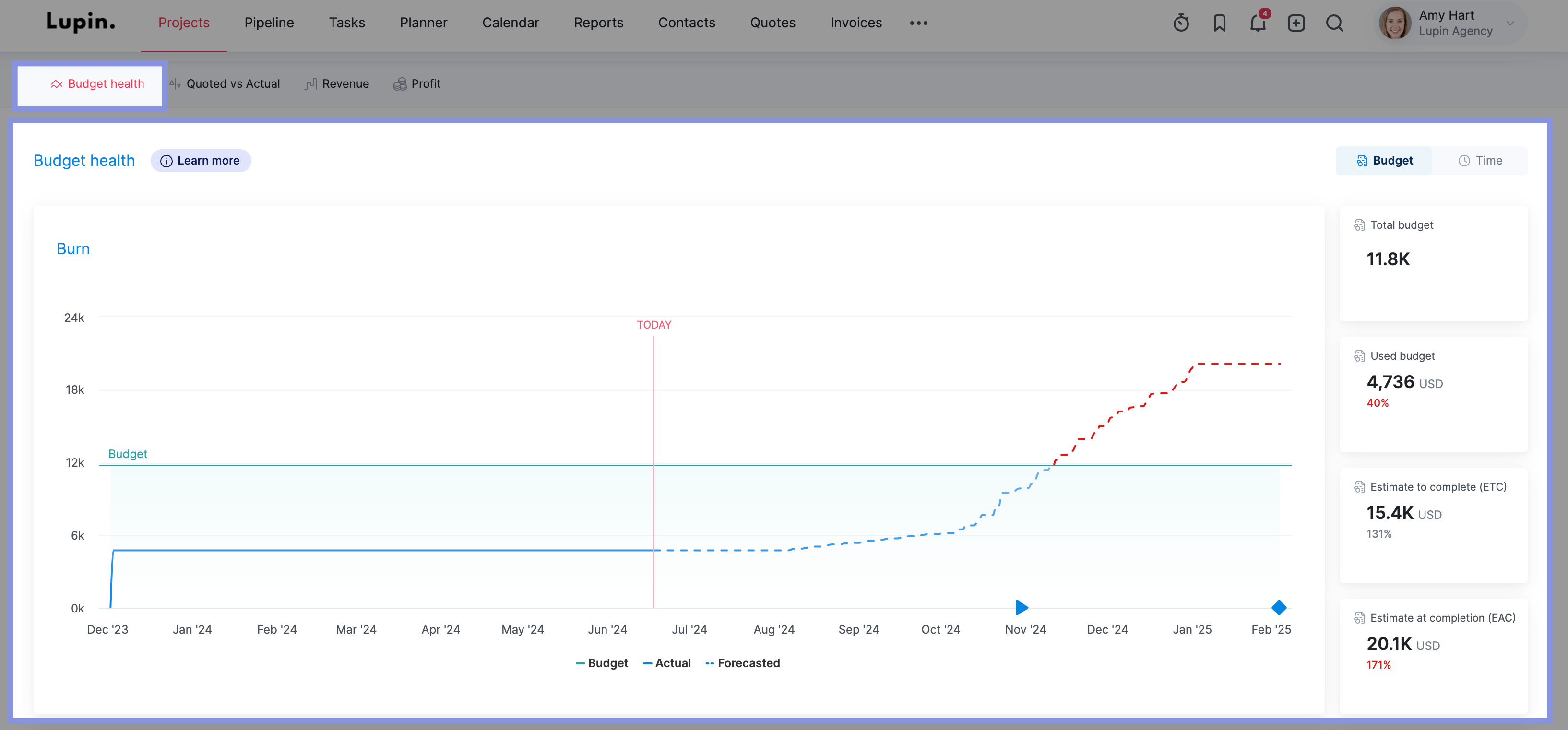
Scrolling down further, you’ll see a comprehensive breakdown of budgeted costs versus actual costs, including forecasts, for various services within the project.
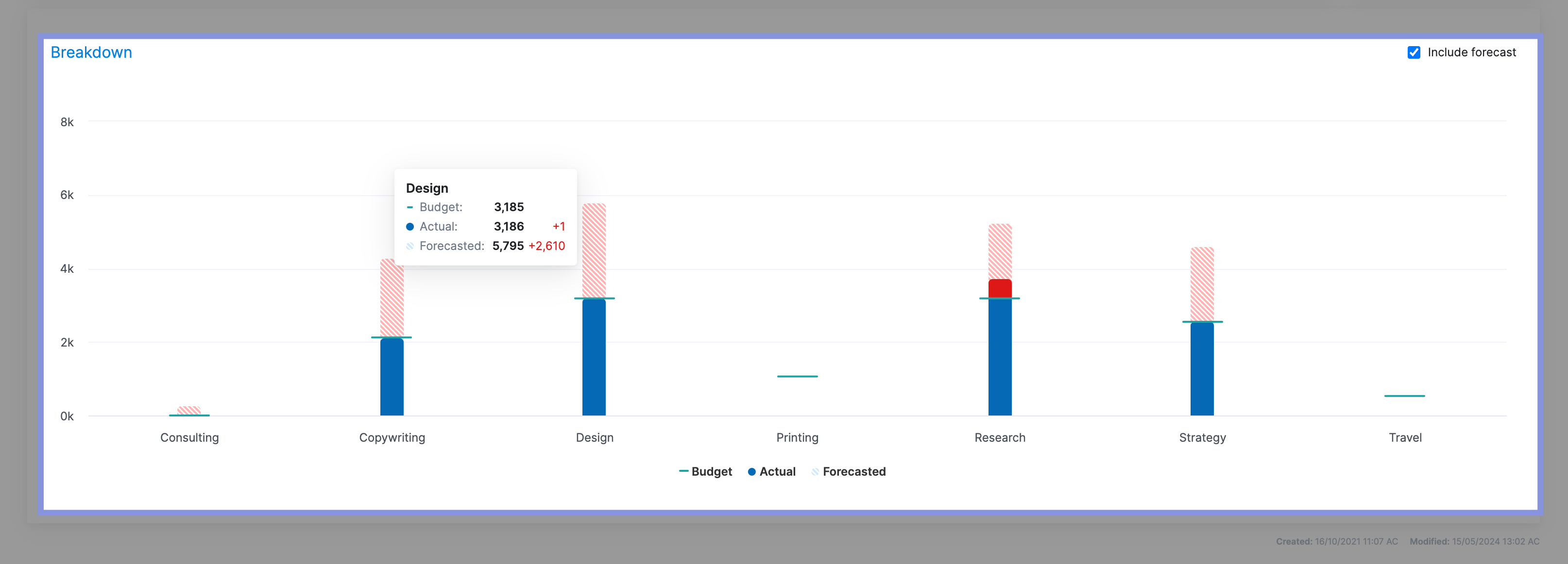
2. Use a single source of truth for tracking external costs
Monitor all your expenses and bills in one platform instead of keeping them scattered in different software.
Why?
So you avoid accidentally missing external costs that’ll change your project estimates and budget. And can quickly understand the true costs of in-progress projects instead of manually trying to piece them together across a disconnected tech stack.
In Scoro, you can keep all your external costs in one place. They’re tracked via two categories: expenses and supplier bills.
Scoro integrates with platforms like Expensify, Xero, and Quickbooks so you can automatically import tracked external costs into your projects.
You can also add expenses directly from the “Project” view or click “Create a new expense” from the “Purchases” view.
Either way, click the “Project” dropdown on any expense and choose the corresponding project to ensure that project costs are tracked accurately.
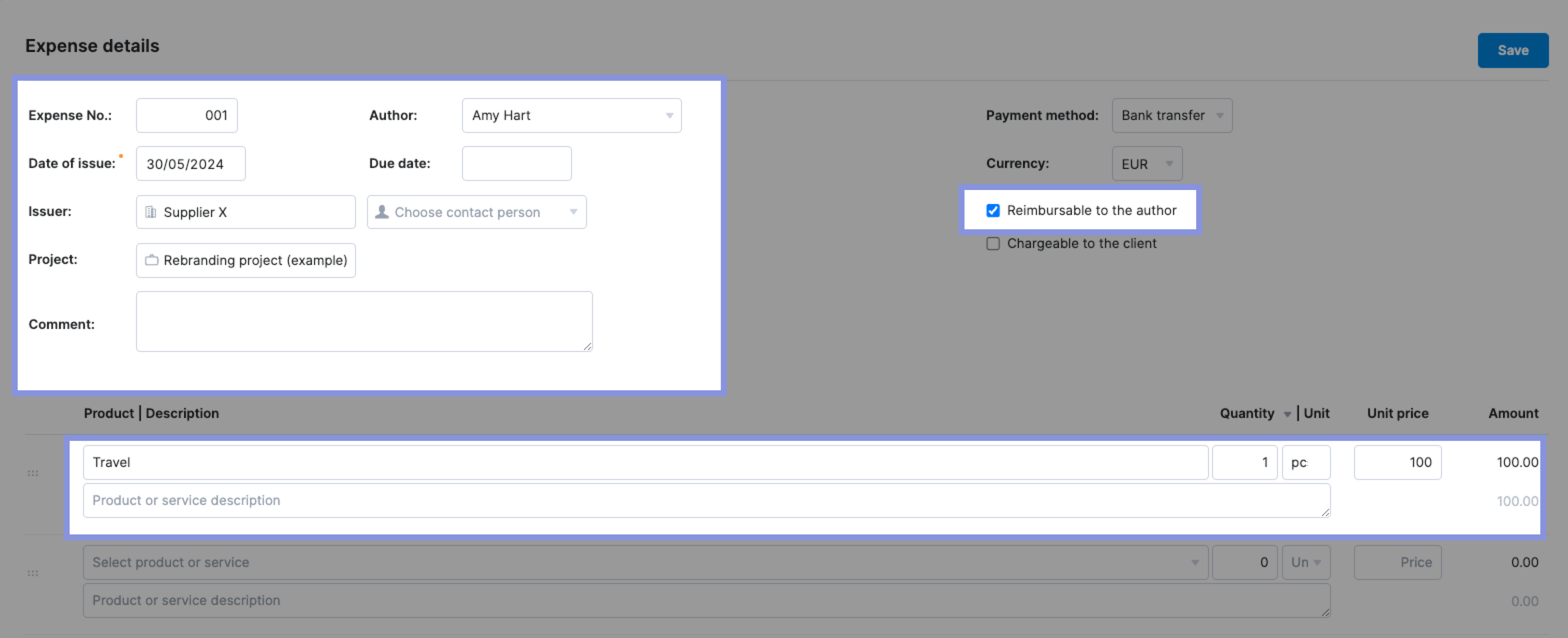
For bills, you can use the info on your estimate to automatically generate a new bill. Make sure to link it to the appropriate project to keep track of all your costs.
Further Reading: Managing External Costs In Scoro
Then, monitor all external project costs under the “Bills and Expenses” column in the Project view’s “Quoted vs. Actual” table.
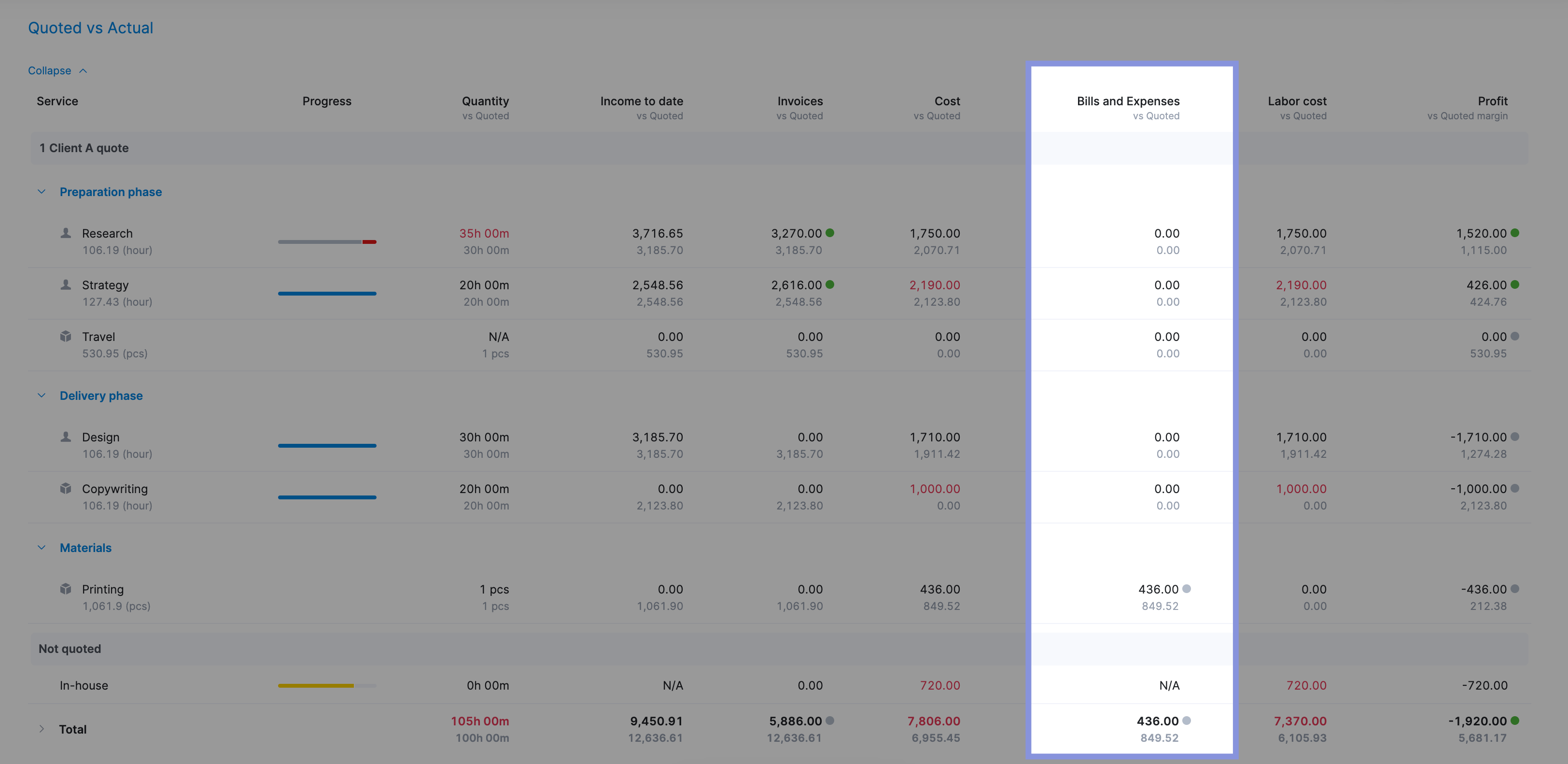
Top Tip
When you use Scoro to create quotes, all your listed project tasks, bills, and expenses are automatically transferred to your “Quoted vs. Actuals” table.
This gives you a quick way to monitor project spend. And ensure that unexpected expenses don’t derail your project budget.
If you notice that certain project phases or cost categories are consistently going over, you’ll want to investigate further and make the necessary changes to avoid this in the future. For example, you may want to use a less expensive resource to reduce costs or expand the project scope and quoted hours.
Further Reading: Project Financial Management: A Step-by-Step Guide
Review budget data across your project portfolio
You can also review budgets vs. actuals of your entire portfolio to see which projects are the most profitable and analyze big-picture budget and spending trends.
Go to the “Project list” view and check the following from the “Data columns” drop-down after clicking “View“:
- Income
- External cost
- Gross income (Income – external costs)
- Labor cost
- Project profit
- Delivery margin
By viewing all your high-level numbers at a glance, you can compare the performance of each project against the quoted costs. For example, if you notice that your retainer projects have the highest profitability, you can focus more on those types of projects in the future.
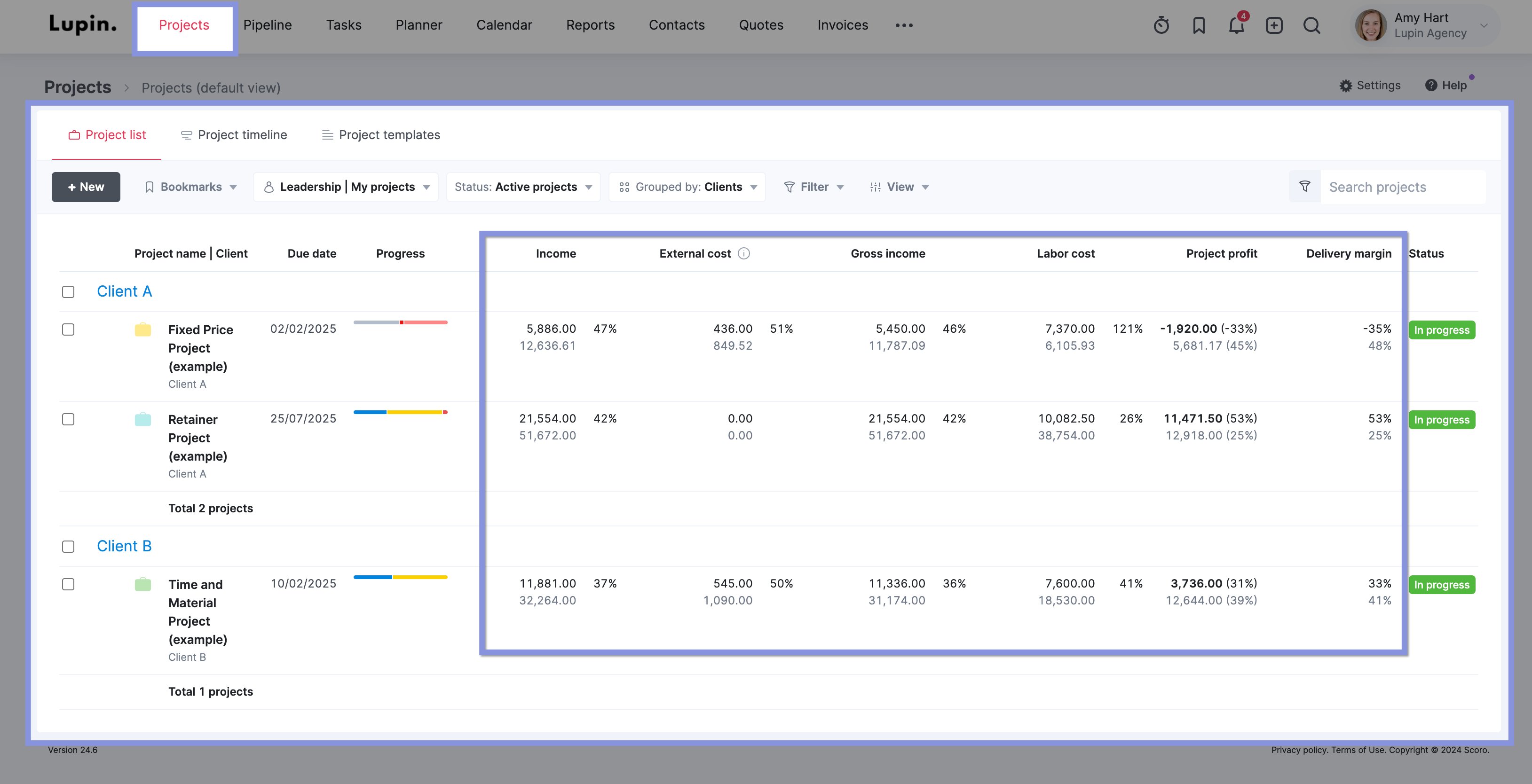
Further Reading: 7 Best Project Portfolio Management (PPM) Software
Keep projects profitable with Scoro
Knowing how to create and stick to precise project budgets is key to maintaining profit margins and client relationships.
Take it from Colleen Kelley, President of Stratford Group.
Their team had several disparate systems to track projects, budgets, and resource management. Once they implemented Scoro, everything was connected in one system, allowing them real-time visibility of project budgets, resource utilization, and profitability.
Colleen says:
“We didn’t have a time tracking system before, but Scoro made it easy to implement time tracking across the company. We can now be highly accurate on project profitability.”





